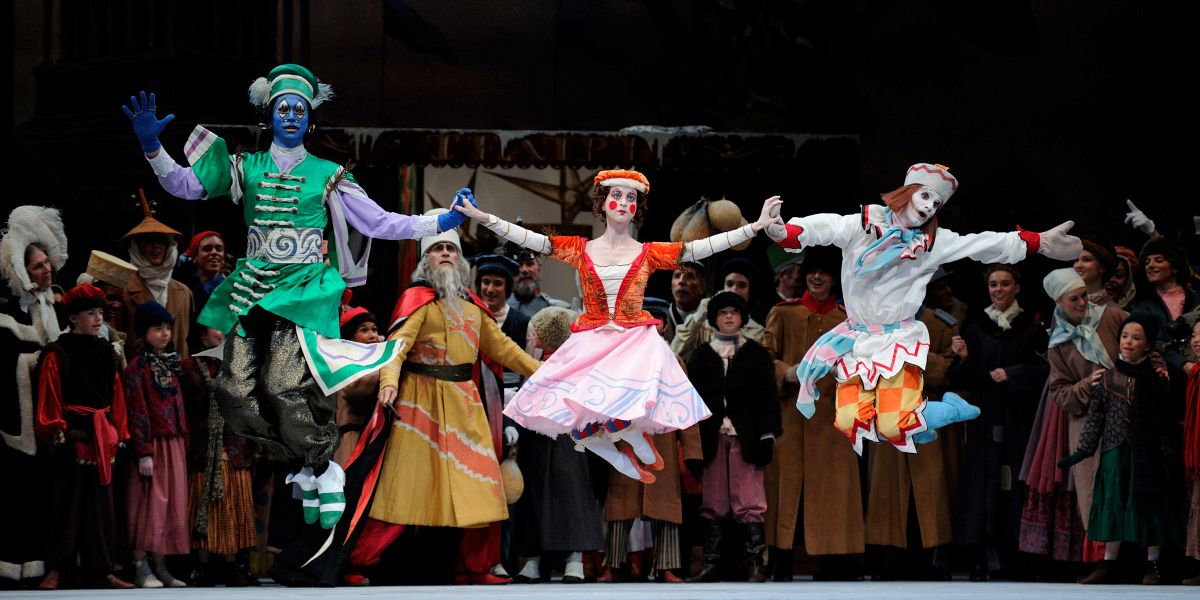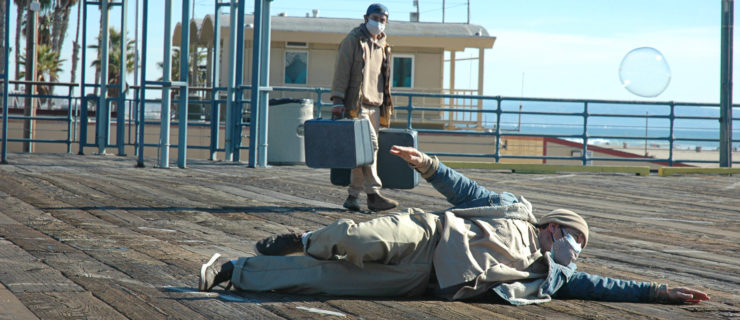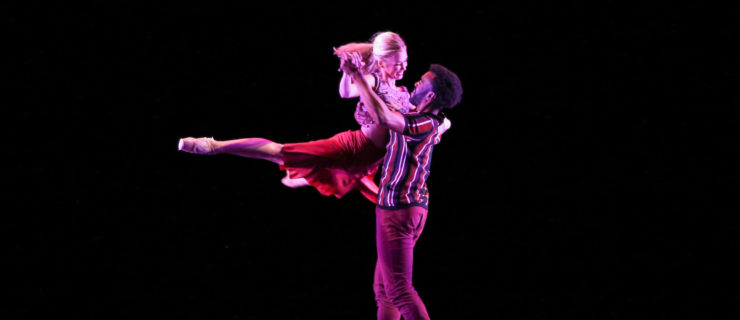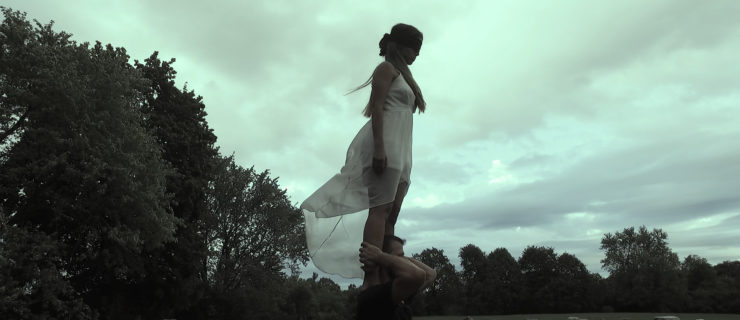It's Time to Overhaul the Blackface (or Blueface) Puppet in Petrouchka
When Michel Fokine’s ballet Petrouchka premiered in 1911, none of the (largely white) audience members in Paris objected to the big, dumb puppet being portrayed as a Moor in blackface. Stravinsky’s music was stirring, Fokine’s choreography was ground-breaking, and Alexandre Benois’ sets and costumes were transporting. Nijinsky’s portrayal of Petrouchka, the puppet with a human soul, tugged at the heart.
This was during the third season of Diaghilev’s Ballets Russes, and the ballet was a hit. Bronislava Nijinska, sister of Nijinsky, described the impact in her book Bronislava Nijinska, Early Memoirs:
“Petrouchka,
Stravinsky’s musical masterpiece, took Paris by storm. Thunderous applause. Triumph for Stravinsky, for Benois, for Fokine. Triumph for Nijinsky, for Karsavina, and for the ballet ensemble. Triumph of course for Sergei Pavlovitch Diaghilev. An unforgettable performance. The magic, the creative imagination, the artistry. . . . The enraptured public poured behind the wings, into the dressing rooms of the artists, onto the stage.”
No mention of the Moor puppet being offensive. Nor was there any hint of mainstream controversy 31 years later when Petrouchka became the standout ballet of the 1942 season of Ballet Theatre (later ABT), giving a young Jerome Robbins the part of Petrouchka, a deeply meaningful role for him. Nor in 1970 when the Joffrey Ballet took it on. For decades, Petrouchka was a beloved addition to the ballet canon.
But times change and audiences change. White people are now more aware of how odious the practice of blackface was. Blackface minstrelsy was developed specifically to ridicule Black people for the entertainment of white people. We look back at those traditions as cruel and racist. In Petrouchka, the Moor is not only mean and aggressive, but prodigiously stupid. He worships a coconut when he can’t crack it open with his sword.
According to a quick internet search, the first willingness I could find of any critic to call out racism is a review of Petrouchka when ABT revived it in 2005. The New York Times critic John Rockwell wrote this: “Marcelo Gomes made a commanding Moor, with all the racist business about childlike, violent blacks intact.”
Five years later, while I was editor in chief of Dance Magazine, Joseph Carman wrote an opinion piece titled “Exotic or Offensive?” with the subtitle “Ballet’s Outdated Stereotypes Are Overdue for Retirement.” He mentioned ballets like Raymonda, La Bayadère and Petrouchka.
To offer an example of a positive action taken, I added a sidebar on the decision by Oakland Ballet in 1991 to paint the Moor doll’s face a deep blue. I thought that approach, later adopted by San Francisco Ballet, was ingenious. I called it “The Avatar Solution.”
Last semester, as I was teaching dance history at Juilliard, I told my students that Petrouchka was a beautifully tragic ballet that unfortunately has a racist character—the Blackamoor puppet, Petrouchka’s rival. While discussing the problem raised by the Moor being in blackface, I referred to the blueface make-up as a solution. As far as I was concerned, Oakland Ballet and San Francisco Ballet had solved the problem.
But my students would have none of it. They felt such a compromise did not address the underlying racism. They declared, to a person, that they would never go see such a ballet.
Sarasota Ballet learned the hard way how unpopular Petrouchka had become. During its 2015 tribute to the Ballets Russes and Nijinsky, it ran into controversy. Here is Carrie Seidman reporting in the Sarasota Herald-Tribune:
“Even before the curtain opened at the Sarasota Opera House, a firestorm had erupted on social media following the posting of a dress rehearsal photo showing dancer David Tlaiye as The Moor in Michel Fokine’s “Petrushka,” [alternate spelling] in full blackface with outlined white lips.
“Given the timing—riots were ongoing in Baltimore over the death of African American Freddie Gray while he was in police custody—it seemed to many especially insensitive and inflammatory.
“The ballet’s argument, of course, was that this was a period piece, intentionally recreated with as much historical accuracy and detail as possible. But even some in the company’s normally besotted audience, seemed uncomfortable with the choice, with a diminishment of applause and a few random boos as Tlaiye took his bows.”
Concerned about the future of one of my favorite ballets, I decided that, with my class, we would reach out to Isabelle Fokine. She is the granddaughter of Michel Fokine, frequent stager of his ballets, and rights holder to Petrouchka in the United States. After my preliminary email, Isabelle replied, saying she had seen my article about the blueface decision 10 years ago. “I think the position that Oakland Ballet took is right on the mark,” she told me. However, she said she was open to hearing from my students.
As a class, we worked on a letter to Isabelle. One student suggested changing the make-up to some form of whiteface but also inserting a note about the original character into the program. Another student spoke very directly about the offense: “I know I would feel marginalized watching it. For me racism isn’t a thing of the past but a real issue I deal with every day.”
Ultimately Isabelle said she agreed with the students. She also described how her grandfather observed human behavior as research for making the ballet:
“When Fokine created the physical vocabulary of the characters, he modeled them on commuters on the St. Petersburg tram. So the overly confident man [the model for the Moor] sat with his feet pointed out and his knees spread apart, like a second position. The shy withdrawn man [model for Petrouchka] hunched his shoulders forward, toes pointed in and knees together. Fokine wanted to use what we all recognize as universal body language in a ballet to illustrate character.”
So, the blackface makeup wasn’t necessary to the character portrayal. And it wasn’t Fokine’s idea in the first place. Benois, the scene designer who collaborated with Stravinsky on the libretto, had set the ballet in an 1830s pre-Lenten fair. According to his memoirs published in 1960, he had recalled seeing a pair of silly, aggressive blackface puppets in St. Petersburg in the 1800s.
When I reconnected with Isabelle in the summer, now with Black Lives Matter protests in full swing, her thinking had evolved:
“I think we are all in agreement that he [the Moor puppet] is both out of date and inappropriate. This has been the case for a number of years. The “blue face” solution is not sufficient. . . . Since my agenda is to maintain Fokine’s legacy accurately, I have been racking my brain how this character could be changed, while still maintaining the choreography. However I think I have stumbled on the answer through one of my father’s childhood toys (of all things). I would propose to replace him with a ‘Warrior,’ based in appearance on a Cossack doll my father had. That way he could be fierce and lustful, associated with what he does, rather than a particular ethnic group.”

In a later statement Isabelle fleshed it out even more: “The Warrior’s face would be doll-like make-up with an absurdly large moustache. His hat would be an enormous shearling papakha.” To complete the picture, she plans to replace the coconut with a decorated Easter egg. And she’ll replace the pictures of palm trees in the Moor’s room with “horses galloping across the steppes.”
Hats off to Isabelle for figuring out how to uphold Fokine’s legacy. And to my students for pushing the issue. I hope this means that future generations will be able to fully experience the enchantment of Petrouchka.




